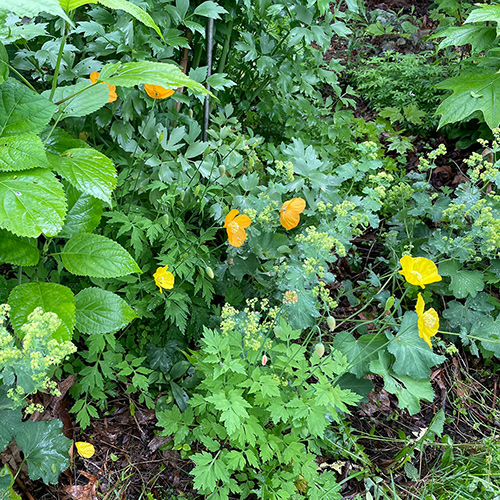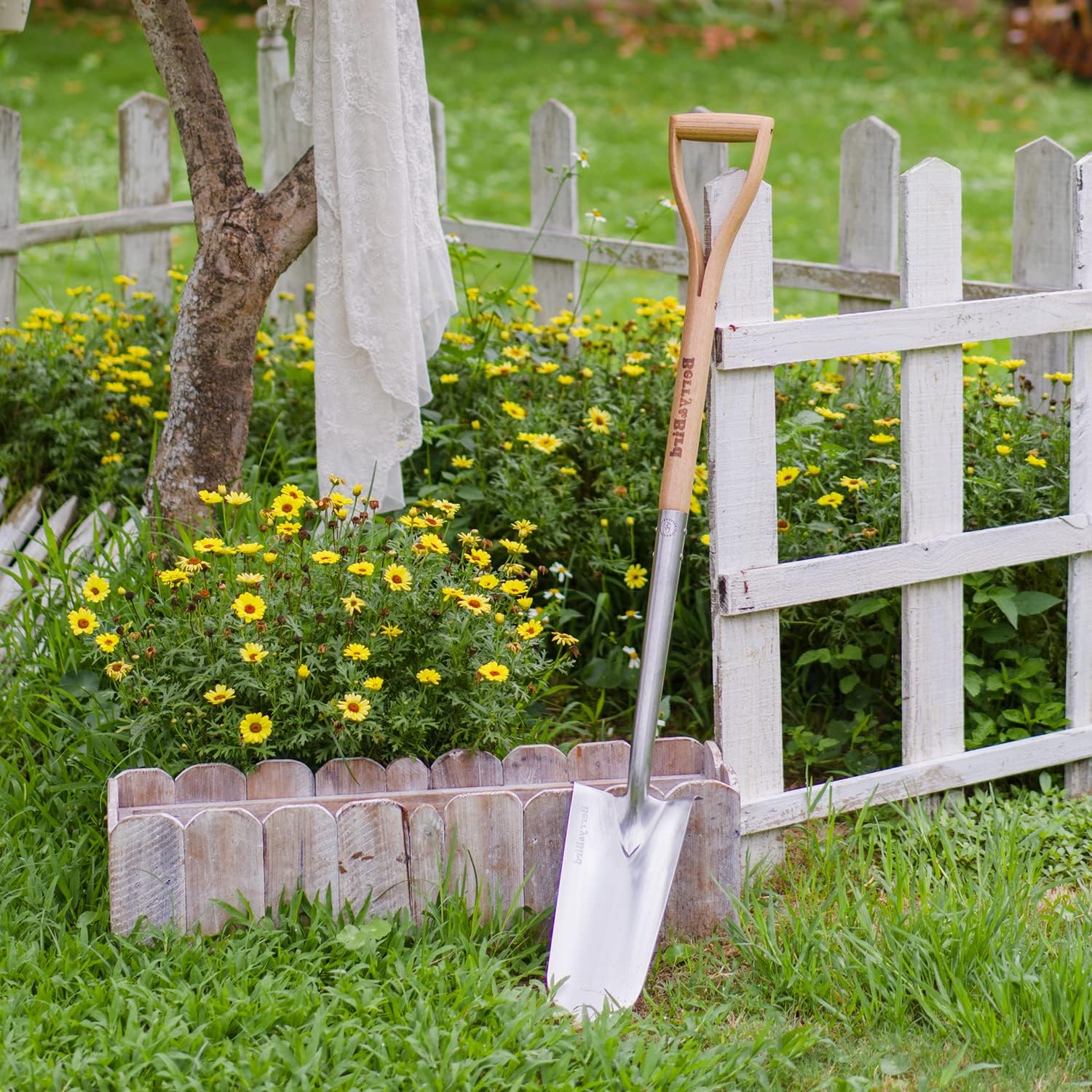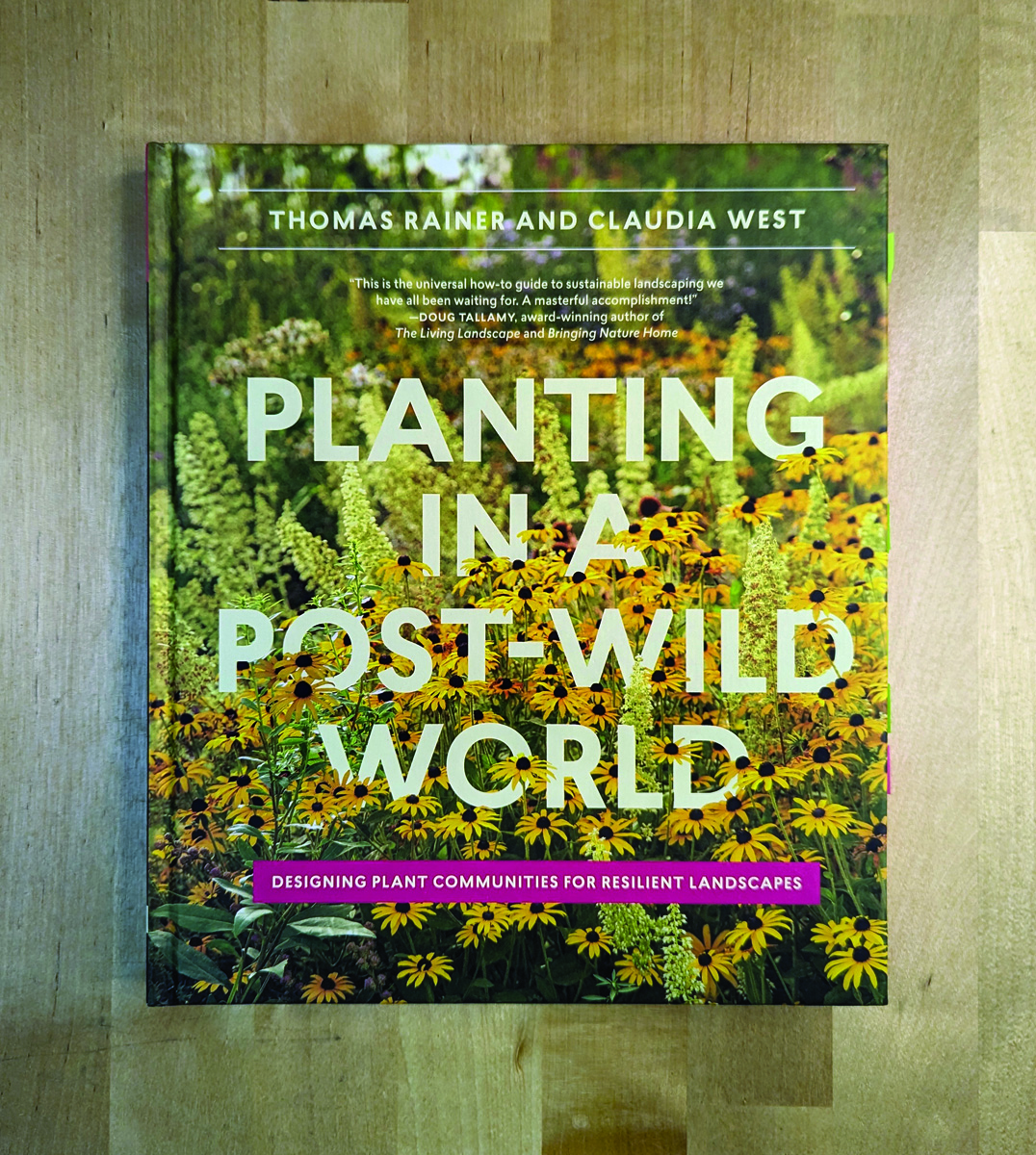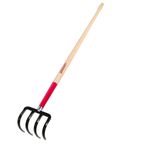
I’ve been accused of being cheap, so maybe I’m particularly drawn to self-sowing garden plants, but really, what gardener doesn’t love a free plant? Plus, self-sowers sometimes make brilliant design choices. They will combine with other plants in ways you would never have thought of, and they cram themselves into spots where it would have been impossible to plant anything. Granted, it’s a fine line between “charmingly carefree” and “weeding headache,” but here’s a selection of self-sowing plants I’ve found to behave agreeably in my own garden.

Woodland phlox
Phlox divaricata
Zones: 3–8
Size: 12 to 15 inches tall and 12 to 18 inches wide
Conditions: Partial to full shade; rich, moist soil
Native range: Eastern and midwestern United States
When I first realized my favorite phlox was not simply spreading by its rhizomes but seeding in new plants, it seemed too good to be true. To my delight, the new plants varied in color from the blue of the original cultivar ‘Clouds of Perfume’, springing up in white and pastel shades of lavender and pink. The seedlings have also begun popping up in a shady section of lawn, where they are tolerating an occasional high mowing after flowering in mid-spring.

Flowering dogwood
Benthamidia florida syn. Cornus florida
Zones: 5–9
Size: 20 to 30 feet tall and 20 to 25 feet wide
Conditions: Sun to partial shade; moist to average soil
Native range: Eastern North America
It’s hard for me to pull any self-sowing plant, but somehow woody plants are the hardest, especially this beautiful native tree that is the staple ingredient of many a suburban spring landscape. In my area, these seedlings often occur from native seed, but I also have a mature plant in the backyard that I think is responsible for the volunteers around my yard. Never having the heart to pull them, I transplant each to the woodland edge, where they mostly fend for themselves. In the front yard, I have a large Kousa dogwood (Cornus kousa, Zones 5–8), which complicates my native volunteer-dogwood rescue campaign because it also produces many seedlings, and they can be difficult to tell apart at that stage. Generally, Kousa leaves are slightly narrower and come to a sharper point. Though popular, Kousa dogwoods show invasive tendencies and may be coming to a Northeastern state invasive-plant list near you, so you probably want to avoid saving its seedlings.

Welsh poppy
Papaver cambricum syn. Meconopsis cambrica
Zones: 4–8
Size: 8 to 14 inches tall and 4 to 8 inches wide
Conditions: Partial to full shade; rich, moist soil
Native range: Western Europe
Though perennial, these striking little poppies come and go in my garden, generally keeping to the moist, shady areas. I consider them a completely harmless self-sower, never dominating other plants and never coming in too thickly. I know they’re around of course, but I’m always pleasantly startled when their bright yellow or orange paperlike flowers open in spring. The ferny foliage is pleasing as well, contrasting nicely with beefier shade plants. It’s best to grow this sweet little shade-garden addition from seed and to transplant volunteers when they are very young, as the taproot resents moving.

Flowering spurge
Euphorbia corollate
Zones: 3–9
Size: 24 to 30 inches tall and 12 to 24 inches wide
Conditions: Full sun; average to dry soil, drought and compaction tolerant
Native range: Eastern and midwestern North America
The delicate baby’s breath flowers of this native spurge are always a welcome accent to bolder summer blooms, and it’s rare I remove it when it appears. Come fall, it helps asters, goldenrod, and other late bloomers shine with its red and orange foliage, and even occasionally still bears its white flowers in beautiful contrast. In my predominantly sandy, rocky yard, this plant is happy to fill those difficult, full-sun dry spots where other plants fail. Its light and airy nature means it never smothers its neighbors, and it looks best when interspersed with sturdier, more upright plants that help support its sprawling habit. Flowering spurge’s blue-green seedlings are fairly easy to recognize and transplant, but it grows more strongly when allowed to stay where it plants itself.

Cilantro
Zones: Cool-weather annual
Size: 24 to 30 inches tall and 12 to 24 inches wide
Conditions: Full sun; best in rich, moist soil
Native range: Northern Africa, Middle East, and southern Europe
Allow this cool-weather herb to go to seed once and you’ve got it for life. I consider this a delicious blessing, but even if you’re one of the unfortunate people who have the cilantro-tastes-like-soap gene, cilantro is undervalued as an annual spring ornamental. Its delicate umbels of white flowers look great with almost anything and make a good filler for blank spots in your spring garden. They’re also always completely abuzz with pollinators! Cilantro is best grown directly in ground from seed and tends to stress and stunt with transplant or when kept too long in a pot. Its strap-leaved seedlings are easy to spot because they’re one of the first seeds to germinate in the spring, but if you’re in doubt, a quick crush-and-sniff test will confirm your identification.
A note of caution when growing self-sowing plants
While self-sowers are often desirable in the garden, sometimes the behavior can indicate a problem. It’s always a good practice to research new garden additions for aggressiveness and to avoid planting anything that’s listed on your state’s invasive-plant list. It’s helpful to check neighboring states’ lists as well. Planting native is some insurance against accidentally spreading harmful species, but even native plants from other parts of the country can become problematic outside their native region.
More on self-sowers:
Discuss this article or ask gardening questions with a regional gardening expert on the Gardening Answers forum.
And for more Northeast regional reports, click here.
Chloë Bowers is a landscape designer based in Newtown, Connecticut.
Photos, except where noted: Chloë Bowers
Fine Gardening Recommended Products

Berry & Bird Rabbiting Spade, Trenching Shovel
Fine Gardening receives a commission for items purchased through links on this site, including Amazon Associates and other affiliate advertising programs.
Ideal Tool for All Gardeners Use: Our heavy duty trenching shovel is designed by a professional gardening tool designer. Lifetime Durability: This heavy duty drain spade is made of high-quality stainless steel, it is very strong and durable, even if it is used for high-strength work, it will not bend. Ergonomic Wood Handle: The handle of this planting spade is made of ash hardwood harvested from FSC-certified forests and has an ergonomically streamlined design, making it very suitable for everyone’s hands. Multi-Use: This digging shovel is generally used for digging trenches, digging holes, transplanting, edging, moving compost, cutting thick turf and furrowing. The sharp blade allows you to cut, scoop, dig, lift and dice in hard soil.

Planting in a Post-Wild World: Designing Plant Communities for Resilient Landscapes
Fine Gardening receives a commission for items purchased through links on this site, including Amazon Associates and other affiliate advertising programs.
Featuring gorgeous photography and advice for landscapers, Planting in a Post-Wild World by Thomas Rainer and Claudia West is dedicated to the idea of a new nature—a hybrid of both the wild and the cultivated—that can nourish in our cities and suburbs.

Razor-Back Potato/Refuse Hook
Fine Gardening receives a commission for items purchased through links on this site, including Amazon Associates and other affiliate advertising programs.







